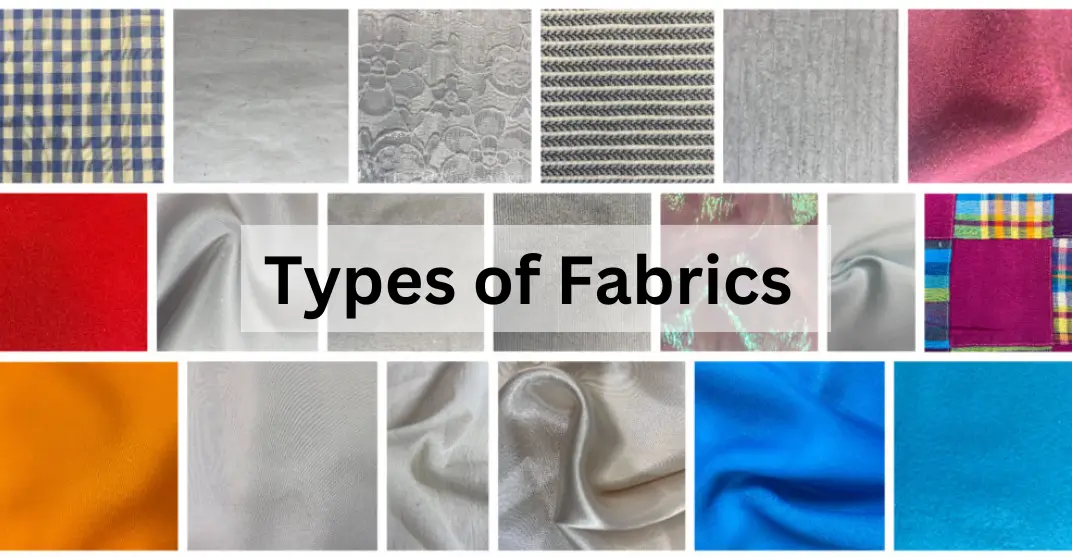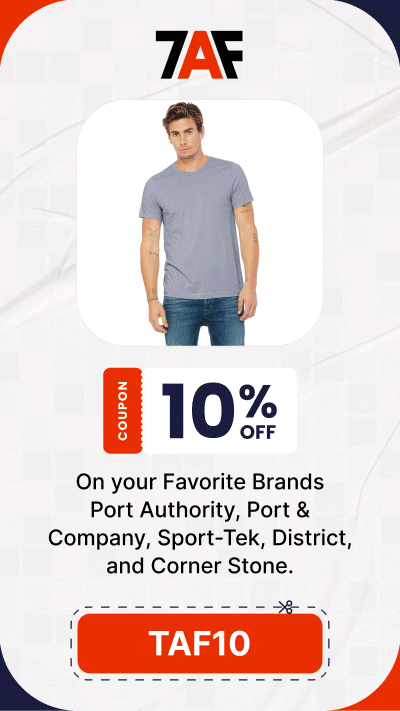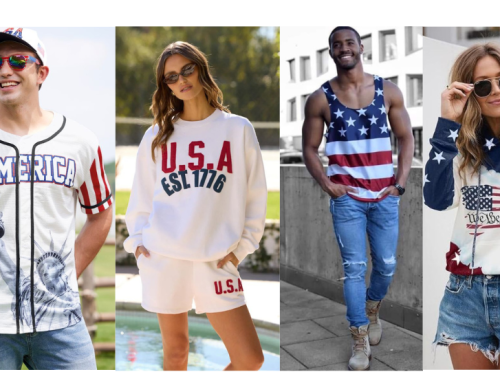
Fabrics are an essential part of everyday life. From the clothes we wear to the furniture in our homes, different types of fabric serve various purposes. Some fabrics are soft and breathable, while others are thick and durable. Each fabric has its own texture, pattern, and use. Whether you need warm wool for winter, light cotton for summer, or shiny fabric for evening wear, understanding different types of fabric materials helps in making the right choices. In this guide, we will explore 30 types of fabric, their characteristics, uses, and how they are made.
What Are Fabrics?
Fabrics are made from fibers that are woven, knitted, or bonded together. These fibers can come from plants, animals, or synthetic sources. Some fabrics are soft and stretchy, while others are rough and firm. Different types of fabric patterns give each material a unique look. Understanding the types of fabric textures can help you choose the best material for your needs.
The 30 Types of Fabrics
Here are all the 30 types of fabrics to know about.
- Cotton Fabric
- Linen Fabric
- Wool Fabric
- Silk Fabric
- Polyester Fabric
- Jersey Fabric
- Mesh Fabric
- Knit Fabric
- Fleece Fabric
- Woven Fabric
- Velvet Fabric
- Satin Fabric
- Denim Fabric
- Chiffon Fabric
- Organza Fabric
- Rayon Fabric
- Spandex Fabric
- Tweed Fabric
- Corduroy Fabric
- Taffeta Fabric
- Brocade Fabric
- Flannel Fabric
- Georgette Fabric
- Tulle Fabric
- Bamboo Fabric
- Crepe Fabric
- Canvas Fabric
- Lace Fabric
- Neoprene Fabric
- Leather Fabric
1. Cotton Fabric
Cotton is one of the most popular types of fabric materials in the world. It comes from the cotton plant and is known for being soft, breathable, and comfortable. Cotton fabric is lightweight, absorbs moisture, and keeps the body cool, making it perfect for warm weather.
There are many different types of cotton fabric:
- Egyptian cotton—luxurious, durable, and incredibly soft
- Organic cotton—grown without chemicals, making it eco-friendly
- Brushed cotton—soft and warm, great for colder weather
Cotton is widely used in T-shirts, dresses, bedsheets, and casual wear. Because of its versatility and durability, it remains a top choice for everyday clothing and home textiles.
2. Linen Fabric
Linen is a natural fabric made from flax plants. It is known for being lightweight, breathable, and highly absorbent. Linen fabric keeps the body cool, making it one of the best choices for hot and humid weather. It also becomes softer with every wash, making it more comfortable over time.
There are different types of linen fabric:
- Plain-woven linen – Lightweight and smooth, used for clothing and household items
- Damask linen – Elegant and patterned, used for fine tablecloths and napkins
- Loosely woven linen – Highly breathable, perfect for summer clothing
Linen is commonly used for dress shirts, dresses, suits, tablecloths, curtains, and bedding.
3. Wool Fabric
Wool fabric is made from the fleece of sheep and is known for its warmth, durability, and softness. It is an excellent choice for cold weather because it traps heat and keeps the body insulated. Wool also has moisture-wicking properties, which help keep the skin dry.
There are various types of wool fabric:
- Merino wool – Soft, lightweight, and non-itchy, perfect for base layers and activewear
- Cashmere – Luxurious, warm, and ultra-soft, often used for high-end clothing
- Alpaca wool – Silky, durable, and hypoallergenic, great for sweaters and blankets
Wool is commonly used in sweaters, coats, scarves, blankets, and suits.
4. Silk Fabric
Silk fabric is a luxurious, soft, and shiny material made from the cocoons of silkworms. It is known for its smooth texture and elegant drape, making it a popular choice for high-end fashion and home décor. Silk is also lightweight, breathable, and naturally hypoallergenic, making it comfortable to wear.
There are different types of silk fabric:
- Chiffon silk – Sheer, lightweight, and flowy, often used for scarves and evening dresses
- Satin silk – Smooth, glossy, and elegant, perfect for gowns and lingerie
- Organza silk – Stiff and transparent, used in wedding dresses and decorative fabrics
Silk is commonly used for dresses, ties, blouses, pillowcases, and bedding.
5. Polyester Fabric
Polyester fabric is a synthetic material made from petroleum-based fibers. It is known for being strong, durable, and wrinkle-resistant. Unlike natural fabrics, polyester does not absorb moisture easily, making it quick-drying and ideal for sportswear. It is also resistant to shrinking, stretching, and fading, making it a low-maintenance fabric.
There are different types of polyester fabric:
- Microfiber polyester – Soft, lightweight, and often used in cleaning cloths and bed sheets
- Satin polyester – Smooth and shiny, used for dresses and formal wear
- Fleece polyester – Warm and fluffy, great for jackets and blankets
Polyester is widely used in sportswear, jackets, bedding, bags, polyester shirts, and home furnishings.
6. Jersey Fabric
Jersey fabric is a soft, stretchy, and lightweight material made from cotton, polyester, or wool. It is known for its comfort and flexibility, making it a popular choice for casual and activewear. Jersey fabric is also breathable and moisture-wicking, which helps keep the body cool and dry.
There are various types of jersey fabric, including:
- Single jersey – Thin, lightweight, and smooth on one side, often used for T-shirts
- Double jersey – Thicker, more structured, and less stretchy, perfect for dresses and skirts
- Interlock jersey – Soft, stretchy, and durable, great for leggings and baby clothes
Jersey fabric is commonly used in T-shirts, dresses, hoodies, leggings, and bedsheets.
7. Mesh Fabric
Mesh fabric is a lightweight, breathable, and open-weave material made from polyester, nylon, or spandex. It is known for its net-like structure, which allows airflow and moisture-wicking, making it ideal for sportswear. Mesh fabric is also durable, flexible, and quick-drying, making it useful for various applications.
There are different types of mesh fabric:
- Power mesh – Stretchy and supportive, often used in lingerie and activewear
- Tulle mesh – Lightweight and decorative, commonly used in wedding dresses and tutus
- Athletic mesh – Breathable and durable, perfect for sports jerseys and gym wear
Mesh fabric is commonly used in sports jerseys, backpacks, sneakers, hats, and safety vests.
8. Knit Fabric
Knit fabric is a soft, stretchy, and flexible material made by interlocking loops of yarn. It is known for its comfort and elasticity, making it a great choice for casual and activewear. Unlike woven fabrics, knit fabrics do not fray easily and offer a smooth, flexible fit.
There are different types of knit fabric, including:
- Rib-knit – Stretchy and textured, often used for cuffs, collars, and sweaters
- Jersey knit – Soft and lightweight, perfect for T-shirts and dresses
- Ponte knit – Thick and structured, great for dresses, blazers, and pants
Knit fabric is commonly used in T-shirts, leggings, hoodies, socks, and baby clothes.
9. Fleece Fabric
Fleece fabric is a soft, warm, and fluffy material made from polyester fibers. It is known for being lightweight yet insulating, making it perfect for cold weather. Fleece is also moisture-wicking and quick-drying, which helps keep the body dry and comfortable. Its warmth, softness, and durability make it one of the most popular types of fabric for winter wear.
There are different types of fleece fabric, including:
- Microfleece – Ultra-soft and thin, great for lightweight jackets and base layers
- Polar fleece – Thick and warm, perfect for winter coats and blankets
- Sherpa fleece – Fluffy and cozy, often used for linings in jackets and hoodies
Fleece fabric is commonly used in fleece jackets, sweatshirts, blankets, gloves, and scarves.
10. Woven Fabric
Woven fabric is a strong, structured, and durable material made by weaving yarns together in a crisscross pattern. It does not stretch much, making it great for formal and structured clothing. Woven fabrics are also long-lasting and resistant to wear and tear.
There are many types of woven fabric:
- Plain weave – Simple and strong, used for cotton shirts and bedsheets
- Twill weave – Diagonal pattern, often found in jeans and workwear
- Satin weave – Smooth and shiny, used for dresses and luxury fabrics
Woven fabric is commonly used in shirts, pants, jackets, upholstery, and curtains.
11. Velvet Fabric
Velvet fabric is a soft, luxurious material known for its smooth, plush texture. It is made by weaving fibers in a way that creates a dense pile, giving the fabric its characteristic sheen and rich feel. Velvet is often used in high-end fashion and home décor due to its opulent appearance.
There are different types of velvet fabric, including:
- Silk Velvet – Known for its soft, shiny surface, it is commonly used in evening wear and luxury home textiles.
- Cotton Velvet – A softer, more affordable option, often found in casual clothing and upholstery.
- Polyester Velvet – Durable and cost-effective, commonly used in everyday garments and home furnishings.
- Stretch Velvet – Made with a blend of fibers like spandex, offering flexibility for form-fitting garments.
- Crushed Velvet – Features a textured, wrinkled surface, giving it a unique, vintage look.
Velvet fabric is commonly used in dresses, skirts, blazers, cushions, and furniture upholstery.
12. Satin Fabric
Satin fabric is a smooth, glossy material with a luxurious shine, created through a weaving process that gives it a reflective surface. It’s known for its elegance and is commonly used in evening wear, formal attire, lingerie, and high-end upholstery. Satin’s sleek, shiny finish makes it a popular choice for garments requiring a sophisticated and polished look.
There are different types of satin fabric:
- Silk Satin – The most luxurious option, offering an ultra-soft feel and radiant sheen. Often used for wedding gowns, evening dresses, and high-fashion garments.
- Polyester Satin – A more affordable satin that still offers a glossy finish. Commonly used for fashion pieces like blouses, skirts, and affordable evening wear.
- Charmeuse Satin – Known for its delicate, silky feel and fluid drape. Often used in lingerie, dresses, and luxury sleepwear.
Satin fabric is typically used for formal wear, bridal gowns, luxurious home décor, and accessories due to its smooth texture and glamorous shine.
13. Denim Fabric
Denim fabric is a durable, woven cotton fabric typically characterized by its twill weave, which gives it a unique diagonal pattern. Known for its strength and versatility, denim is often used in casual and workwear clothing, including jeans, jackets, skirts, and shirts. Its rugged yet stylish appearance has made it a timeless staple in fashion.
There are different types of denim fabric:
- Raw Denim – Unwashed and untreated denim that maintains its original stiffness and dark color. Often chosen by denim enthusiasts for its ability to mold to the wearer’s body over time.
- Stone-Washed Denim – Denim that has been washed with stones or chemicals to achieve a faded, worn-in look. Popular in casual wear for its softer feel and distressed appearance.
- Stretch Denim – A blend of cotton and elastane or spandex, providing extra stretch for added comfort and flexibility. Commonly used in skinny jeans and form-fitting styles.
Denim fabric is commonly used in jeans, jackets, skirts, shirts, and dresses.
14. Chiffon Fabric
Chiffon fabric is a lightweight, sheer material made from silk, nylon, or polyester fibers. It has a soft, flowing drape and a slightly rough texture, giving it a delicate and airy appearance. Often used for formal and evening wear, chiffon adds an elegant and ethereal quality to garments. Its sheer nature allows for layering and creating soft, fluid silhouettes.
There are different types of chiffon fabric:
- Silk Chiffon – The most luxurious and high-quality type, known for its soft feel and shimmering finish. It’s often used for evening gowns, bridal dresses, and high-fashion garments.
- Polyester Chiffon – A more affordable alternative to silk chiffon, offering a similar airy feel but with added durability. Commonly used in affordable formalwear, blouses, and scarves.
- Nylon Chiffon – A durable and versatile version, often used for lightweight, breathable garments like summer dresses, skirts, and accessories.
Chiffon fabric is popular in evening gowns, cocktail dresses, blouses, scarves, and bridal wear.
15. Organza Fabric
Organza fabric is a lightweight, sheer material that is often made from silk, nylon, or polyester. Known for its crisp texture and delicate appearance, organza has a slightly stiff feel, which helps it hold its shape. This fabric is often used in formal wear, bridal gowns, and evening dresses due to its elegant and airy qualities.
There are various types of organza fabric:
- Silk Organza – The highest quality organza, offering a luxurious, soft feel and subtle shine. It’s commonly used for couture gowns, bridal dresses, and high-end fashion accessories.
- Nylon Organza – A more affordable and durable version of organza, often used for bridesmaid dresses, overlays, and decorative accents.
- Polyester Organza – The most common and cost-effective type, providing a crisp finish with more durability. It’s widely used in fashion, event décor, and accessories.
Organza fabric is commonly used for formal gowns, wedding dresses, overlays, blouses, and decorative items.
16. Rayon Fabric
Rayon fabric is a semi-synthetic textile made from natural cellulose fibers, typically derived from wood pulp. Known for its softness, smooth texture, and ability to drape beautifully, rayon is often used as an affordable alternative to silk. It is breathable and comfortable, making it a popular choice for both casual and formal clothing.
There are different types of rayon fabric:
- Viscose Rayon – The most common form of rayon, made by dissolving wood pulp in chemicals. It’s soft, breathable, and often used in dresses, blouses, and skirts.
- Modal Rayon – A more durable and smoother version of rayon made from beechwood pulp. Modal rayon is often used in loungewear, activewear, and undergarments due to its moisture-wicking properties.
- Lyocell Rayon – A more eco-friendly option made from sustainably sourced wood and processed in a closed-loop system. Lyocell is soft, breathable, and resistant to wrinkles, making it ideal for dresses, shirts, and casual wear.
Rayon fabric is commonly used in dresses, skirts, blouses, shirts, and activewear.
17. Spandex Fabric
Spandex fabric, also known as Lycra or elastane, is a highly elastic and stretchy material made from synthetic fibers. It is known for its ability to stretch up to five times its original size, providing comfort, flexibility, and shape retention. Spandex is commonly used in activewear, performance garments, and clothing that requires a snug fit, such as leggings, swimsuits, and athletic wear.
There are different types of spandex fabric:
- Pure Spandex – 100% spandex, offering maximum stretch and flexibility, often used in form-fitting garments like workout gear and compression wear.
- Spandex Blends – Spandex mixed with other fibers like cotton, polyester, or nylon to provide both stretch and durability. Commonly found in sportswear, jeans, and swimsuits.
- Power Stretch Spandex – A more robust version of spandex designed for maximum support and compression. It’s used in performance wear, shapewear, and sportswear.
Spandex fabric is commonly used in athletic wear, dance costumes, swimsuits, leggings, yoga pants, and shapewear.
18. Tweed Fabric
Tweed fabric is a coarse, woolen material known for its textured finish and timeless, classic appeal. Made from a variety of yarns, including wool, and sometimes mixed with other fibers like cotton or silk, tweed is durable and warm. It is often associated with traditional British fashion and is commonly used in outerwear, suits, and accessories.
There are different types of tweed fabric:
- Harris Tweed – A premium, handwoven wool tweed made in Scotland, known for its exceptional quality and unique patterns. It’s often used for high-end coats, jackets, and trousers.
- Donegal Tweed – A type of tweed with a colorful, speckled pattern, named after Donegal in Ireland. It’s known for its distinctive, vibrant flecks and is often used for jackets, skirts, and caps.
- Cheviot Tweed – A fine, soft wool tweed that is lighter in weight, making it suitable for suits, blazers, and lighter outerwear.
Tweed fabric is commonly used for jackets, coats, skirts, suits, and hats. Its durability, warmth, and classic style make it a top choice for both casual and formal outerwear, particularly in colder climates.
19. Corduroy Fabric
Corduroy fabric is a durable, textured material characterized by its raised ridges, or “wales,” which run parallel to each other. Made primarily from cotton, corduroy has a soft feel and offers warmth, making it ideal for colder weather. Its unique texture and versatility make it a popular choice for both casual and formal clothing, as well as home décor.
There are many types of corduroy fabric:
- Fine Corduroy – Also known as “pinwale” corduroy, this type has thin, closely spaced ridges, giving it a smooth appearance. It’s often used in lightweight jackets, trousers, and skirts.
- Standard Corduroy – The most common type, with medium-width wales. It’s used for pants, shirts, and jackets, providing both comfort and a more traditional look.
- Wide Corduroy – Also called “wide wale” corduroy, this version features thick, prominent ridges, often used for heavy-duty pants, jackets, and outerwear.
Corduroy fabric is commonly used for pants, jackets, skirts, shirts, and home textiles like cushions and upholstery.
20. Taffeta Fabric
Taffeta fabric is a crisp, smooth material with a lustrous finish, typically made from silk or synthetic fibers like polyester. Known for its stiffer texture and ability to hold its shape, taffeta is often used in formal and evening wear, as well as for bridal gowns and special occasion dresses. Its shine and structured form make it an ideal choice for garments that require volume and structure.
There are different types of taffeta fabric:
- Silk Taffeta – The highest quality of taffeta, offering a soft, luxurious feel and a radiant sheen. It’s commonly used for high-end evening gowns, bridal dresses, and fashion.
- Polyester Taffeta – A more affordable and durable version of taffeta, known for its crispness and smooth surface. It’s often used in affordable evening wear, prom dresses, and costumes.
- Nylon Taffeta – Similar to polyester taffeta but softer and lighter, often used for formalwear, lining fabrics, and outerwear like coats and jackets.
Taffeta fabric is commonly used for evening gowns, wedding dresses, formal skirts, blouses, and special occasion attire.
21. Brocade Fabric
Brocade fabric is a rich, heavy jacquard fabric that features intricate, raised patterns or designs, often with metallic threads woven into the fabric. Traditionally made from silk, brocade is now also produced using other fibers like polyester and nylon. Known for its opulent and luxurious appearance, brocade is commonly used in formal wear, upholstery, and historical costumes.
There are different types of brocade fabric:
- Silk Brocade – The most luxurious form, made with silk threads and often embellished with gold or silver threads. It’s commonly used for high-end fashion, bridal gowns, and decorative upholstery.
- Polyester Brocade – A more affordable version of brocade made with polyester fibers. It retains the intricate designs and is often used for formal wear, evening dresses, and fashion accessories.
- Cotton Brocade – A lighter, more breathable version of brocade made with cotton fibers. It is often used for casual wear, home décor, and summer garments.
Brocade fabric is commonly used for evening gowns, formal jackets, skirts, upholstery, draperies, and traditional costumes.
22. Flannel Fabric
Flannel fabric is a soft, warm material typically made from wool, cotton, or synthetic fibers. Known for its brushed texture, flannel has a fuzzy surface that provides extra warmth and comfort, making it ideal for colder weather. It is commonly used in shirts, pajamas, and blankets, offering a cozy and casual feel.
There are three main types of flannel fabric:
- Wool Flannel – Made from wool fibers, this type of flannel is soft, insulating, and highly breathable. It’s often used for suits, jackets, and winter accessories due to its warmth and durability.
- Cotton Flannel – The most common type, made from cotton fibers and brushed for a soft, smooth texture. It’s popular for shirts, sleepwear, and bedding because of its breathability and comfort.
- Polyester Flannel – A synthetic version of flannel, often blended with cotton or other fibers. It’s durable, wrinkle-resistant, and used in a variety of casual clothing, including jackets, pants, and blankets.
Flannel fabric is commonly used for shirts, pajamas, blankets, jackets, skirts, and bedding.
23. Georgette Fabric
Georgette fabric is a lightweight, flowing material made from silk or synthetic fibers, known for its slightly crinkled texture. It is semi-sheer and has a smooth surface with a soft, fluid drape. Georgette is often used in evening wear, dresses, blouses, and scarves due to its elegant appearance and ability to create beautiful movement in garments.
There are three main types of georgette fabric:
- Silk Georgette – The highest quality version of georgette, known for its soft, luxurious feel and natural sheen. It’s commonly used for high-end fashion, evening gowns, and bridal wear.
- Polyester Georgette – A more affordable and durable option, offering the same crinkled texture and flow as silk georgette. It’s used for affordable dresses, blouses, and casual wear.
- Nylon Georgette – A more resilient version of georgette with a slightly heavier feel. It’s used in both formal and casual clothing, offering durability alongside the fabric’s flowing nature.
Georgette fabric is widely used for dresses, blouses, skirts, evening wear, and scarves.
24. Tulle Fabric
Tulle fabric is a lightweight, fine netting made from silk, nylon, or polyester fibers. It is known for its delicate, airy texture and is often used in layers to add volume and structure to garments. Tulle is commonly seen in wedding dresses, skirts, tutus, and other formal or decorative clothing due to its ability to create a soft, ethereal effect.
There are three main types of tulle fabric:
- Silk Tulle – The most luxurious version, made from silk fibers. It is soft, smooth, and often used in high-end bridal wear, evening gowns, and fashion.
- Nylon Tulle – The most commonly used form of tulle, known for its durability and versatility. It is widely used in bridal skirts, tutus, veils, and fashion accessories.
- Polyester Tulle – A more affordable and durable option, often used for decorative purposes such as in costumes, party dresses, and home décor.
Tulle fabric is commonly used for wedding dresses, tutus, veils, evening gowns, skirts, and decorative items.
25. Bamboo Fabric
Bamboo fabric is a sustainable, eco-friendly material made from the pulp of bamboo grass. It is known for its soft, silky texture, breathability, and natural antibacterial properties. Bamboo fabric is often used in clothing, towels, bed linens, and activewear due to its moisture-wicking abilities and comfort.
There are various types of bamboo fabric:
- Bamboo Viscose – A soft, luxurious fabric made by processing bamboo cellulose into fibers. It’s commonly used in clothing such as t-shirts, socks, and undergarments because of its smooth feel and breathability.
- Bamboo Lyocell – A more eco-friendly version of bamboo fabric made through a closed-loop process that recycles water and solvents. It’s known for its strength, softness, and resistance to wrinkles. It’s often used in activewear, loungewear, and sustainable fashion.
- Bamboo Cotton Blend – A mixture of bamboo fibers and cotton, offering the softness and breathability of both materials. It is commonly used for towels, sheets, and casual clothing due to its absorbency and comfort.
Bamboo fabric is commonly used for activewear, loungewear, t-shirts, towels, bed linens, and socks.
26. Crepe Fabric
Crepe fabric is a lightweight, textured material known for its slightly crinkled or pebbled surface. It is made from a variety of fibers, including silk, polyester, wool, and rayon. The unique texture of crepe fabric gives it a distinct, elegant appearance that flows beautifully, making it a popular choice for formal and evening wear.
There are three main types of crepe fabric:
- Silk Crepe – The most luxurious type, made from pure silk fibers. It has a soft, flowing drape with a subtle sheen and is often used for high-end fashion, evening gowns, and wedding dresses.
- Polyester Crepe – A more affordable and durable version of crepe made from synthetic fibers. It mimics the texture and appearance of silk crepe and is commonly used for dresses, blouses, and formal wear.
- Wool Crepe – A heavier version of crepe made from wool fibers, often used for colder weather. It provides warmth and structure while maintaining the fabric’s signature texture, commonly seen in suits, skirts, and jackets.
Crepe fabric is commonly used for evening gowns, dresses, skirts, blouses, suits, and wedding attire.
27. Canvas Fabric
Canvas fabric is a heavy, durable material typically made from cotton or linen. Known for its robust texture and resistance to wear and tear, the canvas is often used for items that require sturdiness, such as bags, tents, upholstery, and footwear. It is available in various weights and finishes, providing versatility for both practical and fashionable uses.
There are three main types of canvas fabric:
- Cotton Canvas – The most common type, made from cotton fibers. It is soft, breathable, and relatively lightweight, making it ideal for bags, backpacks, shoes, and casual apparel.
- Duck Canvas – A type of cotton canvas with a tighter weave and heavier weight. It is more durable and used for workwear, upholstery, and tents.
- Polyester Canvas – A synthetic version of canvas offering greater water resistance and durability. It is commonly used for outdoor products like tarps, boat covers, and outdoor furniture.
Canvas fabric is widely used for bags, backpacks, shoes, tents, workwear, upholstery, and home décor items.
28. Lace Fabric
The lace fabric is a delicate, open-weave material featuring intricate patterns, often created by looping, twisting, or knotting threads. Traditionally made from silk, cotton, or synthetic fibers, lace is known for its decorative and elegant appearance. It is often used in wedding dresses, evening gowns, lingerie, and accessories due to its sheer, feminine charm.
There are three main types of lace fabric:
- Chantilly Lace – A fine, delicate lace with intricate floral patterns and a soft, smooth texture. It is often used in bridal gowns, evening dresses, and high-end lingerie.
- Alençon Lace – A heavier lace with raised floral designs and a corded outline, giving it a more structured and sophisticated look. It is commonly used for formal and bridal wear.
- Venise Lace – A thicker, embroidered lace made with heavier threads, often featuring bold, floral, or geometric patterns. It is commonly used for accessories, overlays, and more structured pieces like garments and home décor.
Lace fabric is commonly used for wedding dresses, evening gowns, blouses, lingerie, accessories, and home décor.
29. Neoprene Fabric
Neoprene fabric is a synthetic rubber material known for its stretchability, durability, and insulating properties. It is commonly used in the production of wetsuits, activewear, and accessories due to its ability to retain heat and provide flexibility. Neoprene is water-resistant, making it ideal for use in both fashion and technical apparel.
There are three main types of neoprene fabric:
- Standard Neoprene – The traditional form of neoprene, known for its thickness and excellent insulation properties. It is commonly used in wetsuits, diving gear, and outerwear.
- Thin Neoprene – A lighter, more flexible version of neoprene, used for fashion garments like jackets, skirts, and dresses, as well as accessories such as bags.
- Reinforced Neoprene – Neoprene that is blended with other materials like polyester or nylon for added strength and durability. It is often used for technical applications such as knee pads, protective gear, and bags.
Neoprene fabric is commonly used for wetsuits, jackets, skirts, dresses, accessories, protective gear, and bags.
30. Leather Fabric
Leather fabric is a durable, natural material made from the hide of animals, typically cows, goats, or sheep. Known for its strength, flexibility, and luxurious appearance, leather is commonly used in outerwear, bags, shoes, and upholstery. It develops a distinctive patina over time, making each leather item unique. Leather fabric can be processed in various ways to achieve different textures and finishes.
There are three main types of leather fabric:
- Full-Grain Leather – The highest quality leather, made from the outermost layer of the hide. It is strong, durable, and develops a rich patina over time. Full-grain leather is commonly used for high-end bags, shoes, and furniture.
- Top-Grain Leather – Slightly lower in quality than full-grain leather, top-grain leather is made from the second layer of the hide. It is softer and more flexible, often used in wallets, jackets, and luxury accessories.
- Genuine Leather – A more affordable option made from the lower layers of the hide or leather scraps bonded together. It is commonly used for lower-cost accessories and products like bags and belts.
Leather fabric is widely used for jackets, shoes, handbags, belts, furniture, and automotive upholstery.
Conclusion
There are many different types of fabric, each with unique qualities. Whether you need breathable cotton, warm wool, soft jersey, or shiny satin, choosing the right fabric is important. Knowing the types of fabric textures, fabric prints, and patterns helps in making better fashion and home decor choices. With so many options, finding the perfect fabric has never been easier!
Published on:
February 20, 2025





